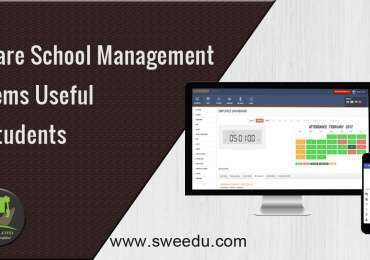
Introduction
What is Cloud-Based School Management Software?
Advantages Of Cloud Based School Management Software
1 ) Global Accessibility :
One of the primary advantages of cloud-based school management software is its ability to provide the benefit of accessing information anytime from anywhere, with cloud-based school management software students, administrators, and teachers can log in with their credentials given at their panel and access the relevant resources and data. This removes the constraint of physical location giving the space for remote learning accessibility.
2) Scalability and cost efficiency
These provide cost efficiency and scalability making it an attractive option for educational institutions. Cloud-based systems run on a subscription-based model allowing institutions to scale up and down as per the needs. This eliminates the need for large capital expenditures and provides cost predictability.
3) Improved communication and collaboration
Cloud-based school management systems make it easier for administrators, teachers, and students to collaborate and communicate effectively. By providing features such as discussion boards, shared calendars, and real-time updates, these systems facilitate seamless communication.
Students are no longer limited by physical proximity as they can work together on group projects, share materials, and engage in discussions. Additionally, teachers can use these systems to share announcements, interact with parents and students, and provide feedback in real time.
This also allows teachers and staff to collaborate and coordinate schedules, while administrators can easily share crucial information.
4) Streamlined Administrative Processes
Cloud-based school administration systems bring about significant savings in labor costs and boost efficiency through their ability to automate various administrative tasks. With features like automated grading, report generation, attendance tracking, and enrollment management, the system streamlines operations and minimizes the chances of errors and redundant data entry.
By eliminating the need for manual documentation, these systems allow administrative staff to focus on more crucial tasks. Moreover, the automation of workflows ensures the timely completion of tasks, freeing up valuable time for staff to devote to more important projects.
Additionally, the consolidation of financial data, administrative data, and student records in a single database through cloud technology facilitates easy access and promotes efficient decision-making for the school.
5) SWEEDU stands out from the crowd and enhances the learning atmosphere with its distinct characteristics: – A User-Friendly Interface: SWEEDU prioritizes user satisfaction by offering administrators, teachers, students, and parents a straightforward and intuitive interface. –
Seamless Integration: SWEEDU goes above and beyond by creating a unified and interconnected learning landscape through its smooth integration with other educational tools and platforms. –
Tailored Customization: Recognizing the diverse needs of different organizations, SWEEDU offers the flexibility to customize the program, ensuring a personalized and efficient management system.
Challenges of Cloud-Based School Management Systems :
Privacy and data security are critical concerns, and educational institutions must prioritize the safeguarding of sensitive student information. To achieve this, reputable cloud service providers implement rigorous security protocols such as encryption, access controls, and regular data backups.
These measures not only reduce the risk of unauthorized access and data breaches but also provide a haven for sensitive data.
“The reliability of cloud systems is a pressing concern. These technologies play a crucial role in supporting the everyday operations of educational institutions, making any downtime or service interruptions highly impactful.
Fortunately, cloud service providers often employ multiple data storage locations, ensuring excellent uptime and redundancy. This means that if one server or data center experiences issues, the system can seamlessly shift to another location, avoiding disruptions and ensuring continuous platform access.”
As institutions implement a cloud-based school administration system, they may encounter obstacles involving user adoption and training. To ensure proficiency among administrators, teachers, and staff, thorough training and support must be provided.
This can involve hosting workshops, providing materials, and offering ongoing assistance to address any concerns or difficulties that arise during the transition. By investing resources in extensive training and support, institutions can maximize the benefits of the cloud-based system and achieve a smooth adoption process.
FAQS
Q1. How does Cloud-Based School Management Software improve communication?
A. By utilizing integrated messaging capabilities, cloud-based platforms such as SWEEDU allow for seamless communication among teachers, parents, and students in real time. This fosters a sense of transparency and collaboration.
Q2. Is SWEEDU suitable for small schools?
A. “Undoubtedly, SWEEDU is tailor-made to cater to the needs of educational institutions of any caliber. Its flexibility makes it the ideal solution for smaller establishments seeking growth.”
Q3. How does SWEEDU ensure data security?
A. Using cutting-edge encryption mechanisms, SWEEDU implements secure authentication techniques and regular security updates to safeguard valuable educational data from unwanted access.
SWEEDU employs state-of-the-art encryption methods, performs regular security updates, and utilizes secure authentication techniques to safeguard vital educational data from unauthorized access.
CONCLUSION
The use of cloud-based school management software, specifically utilizing SWEEDU’s innovative features, has proven to be a game-changer for educational institutions worldwide.
Its numerous benefits, from encouraging global collaboration to simplifying administrative tasks, are undeniable. By implementing this technology, educational institutions are demonstrating their dedication to providing all stakeholders with a seamless and efficient learning experience, rather than simply embarking on a modernization endeavor.





